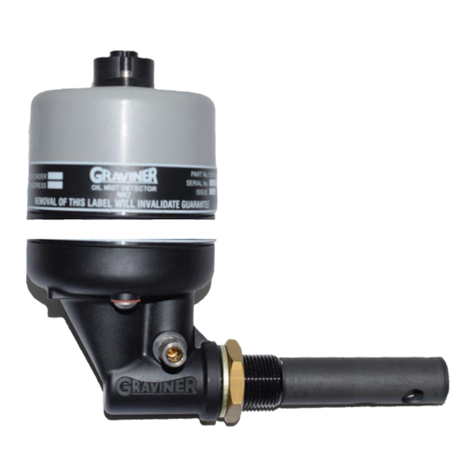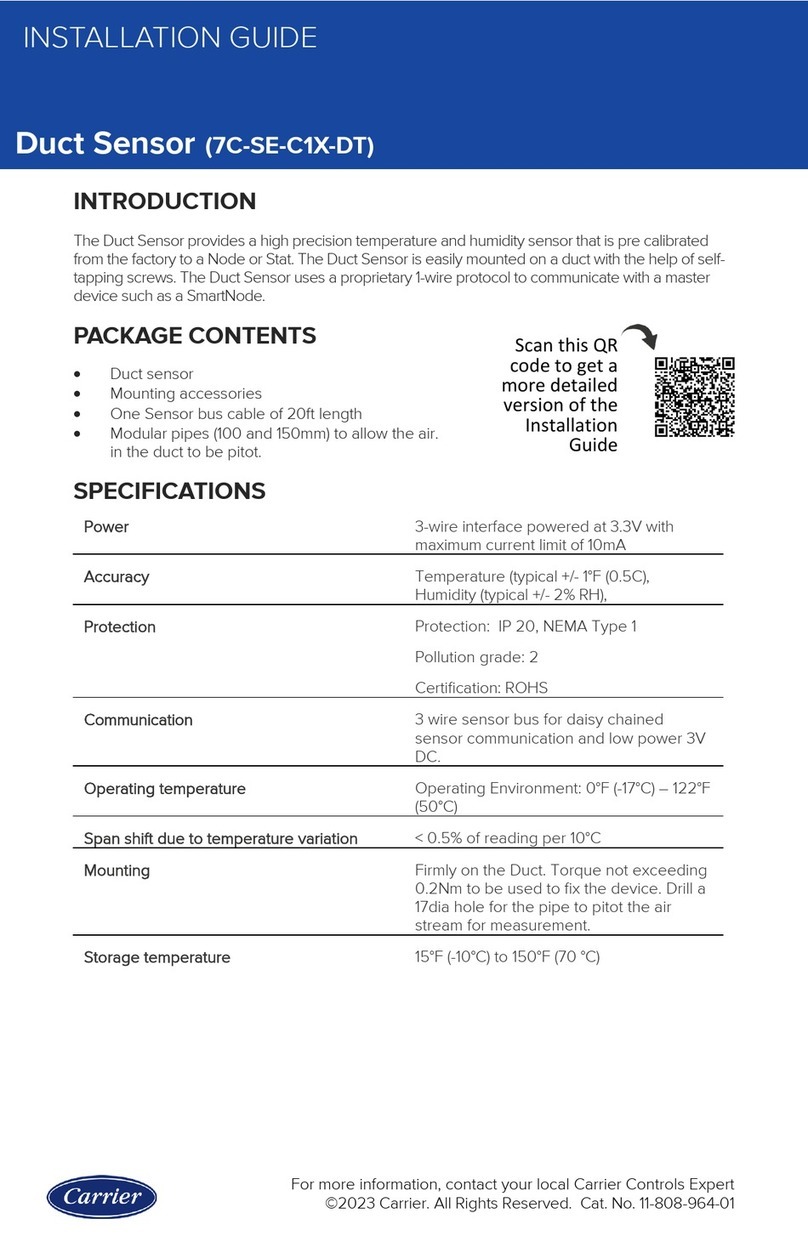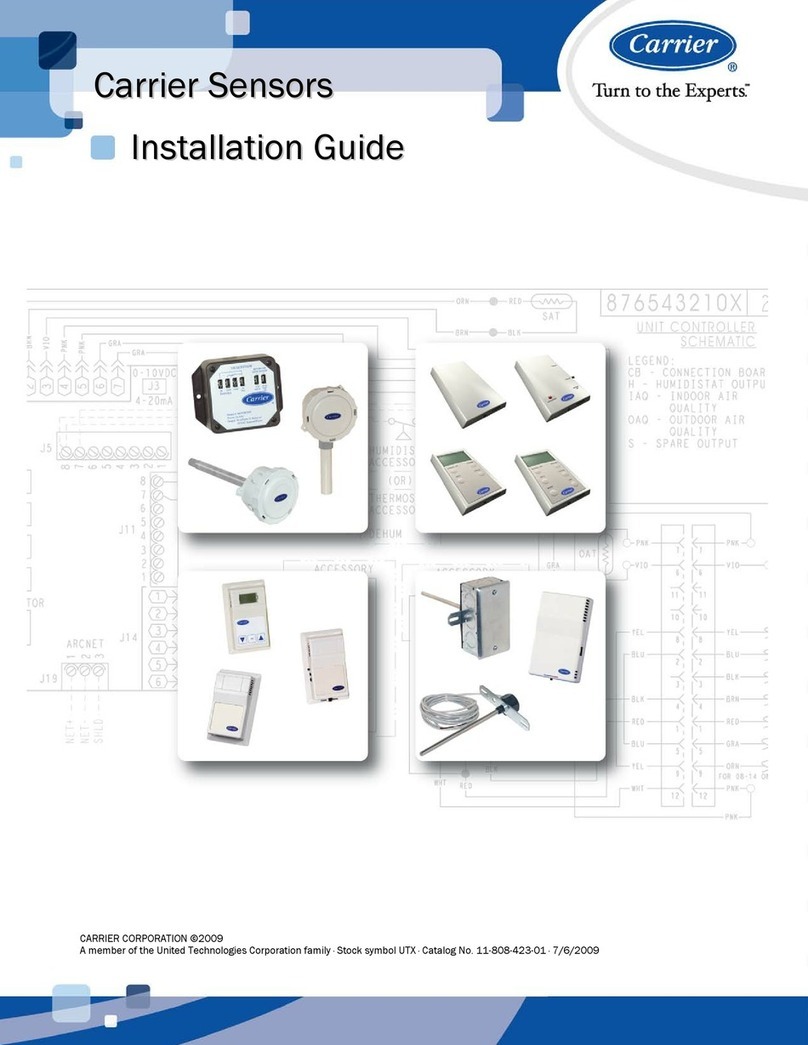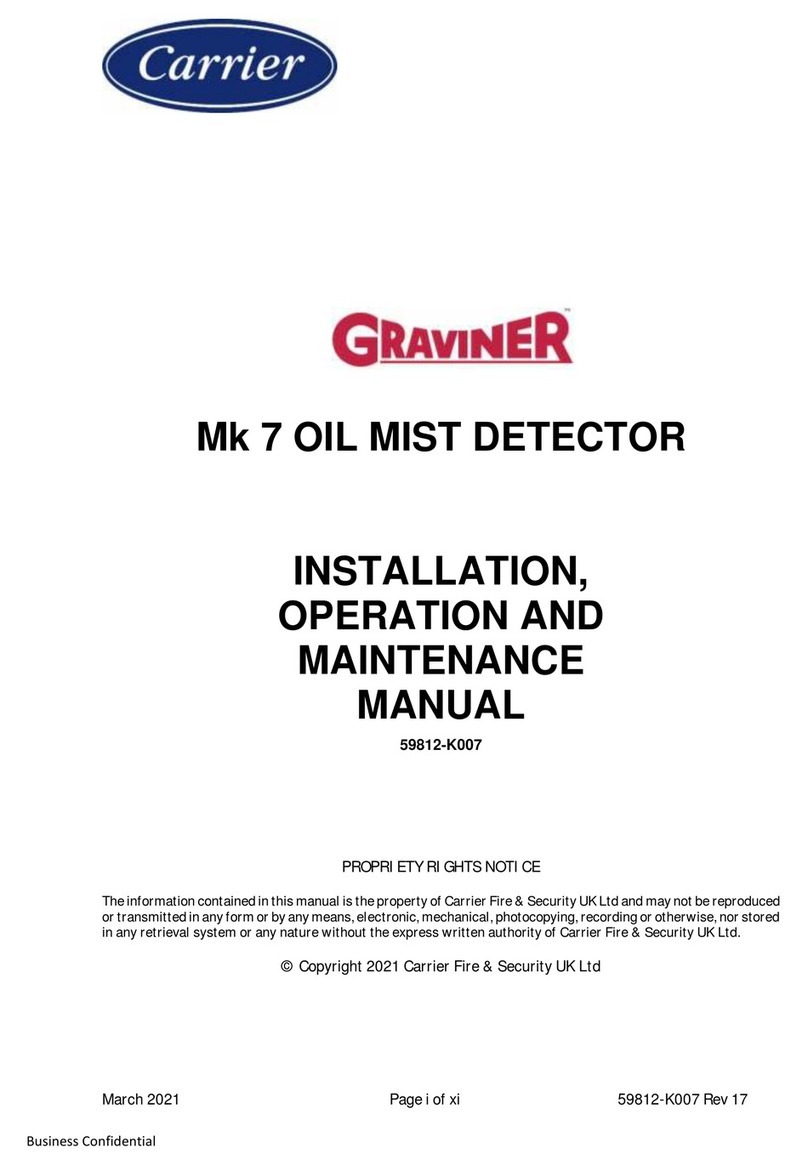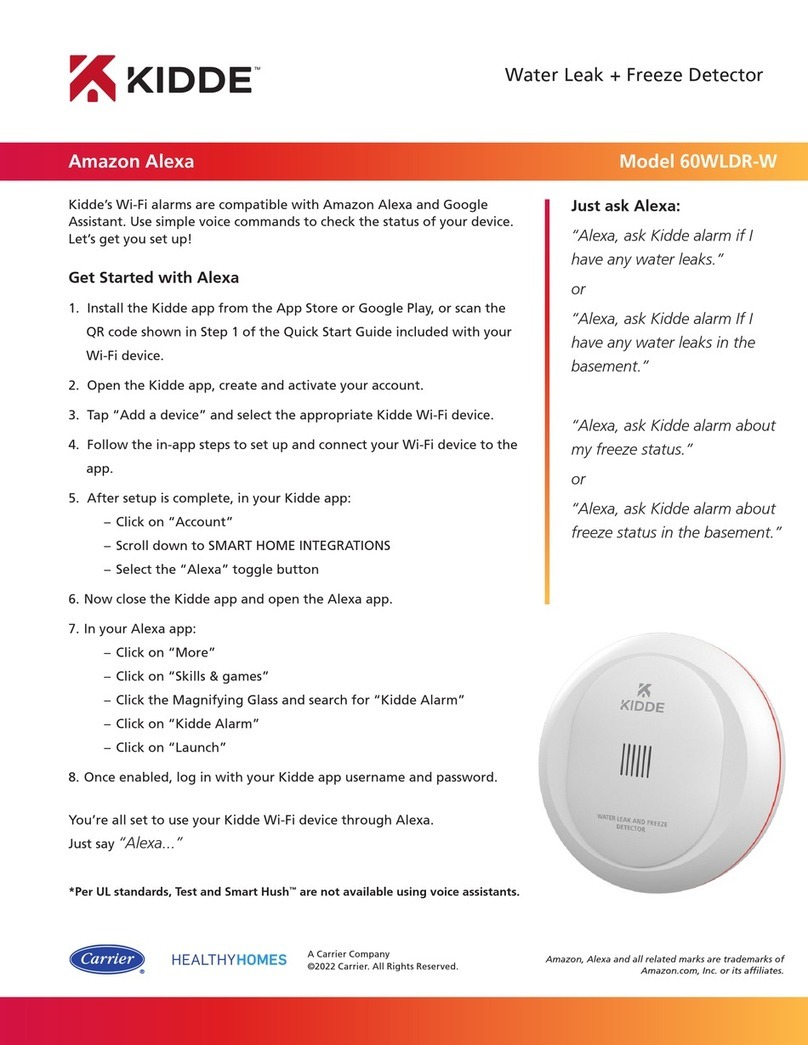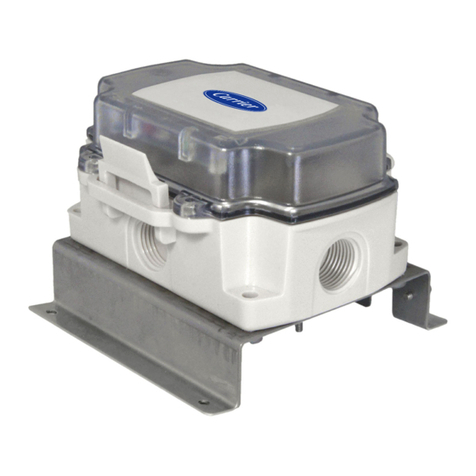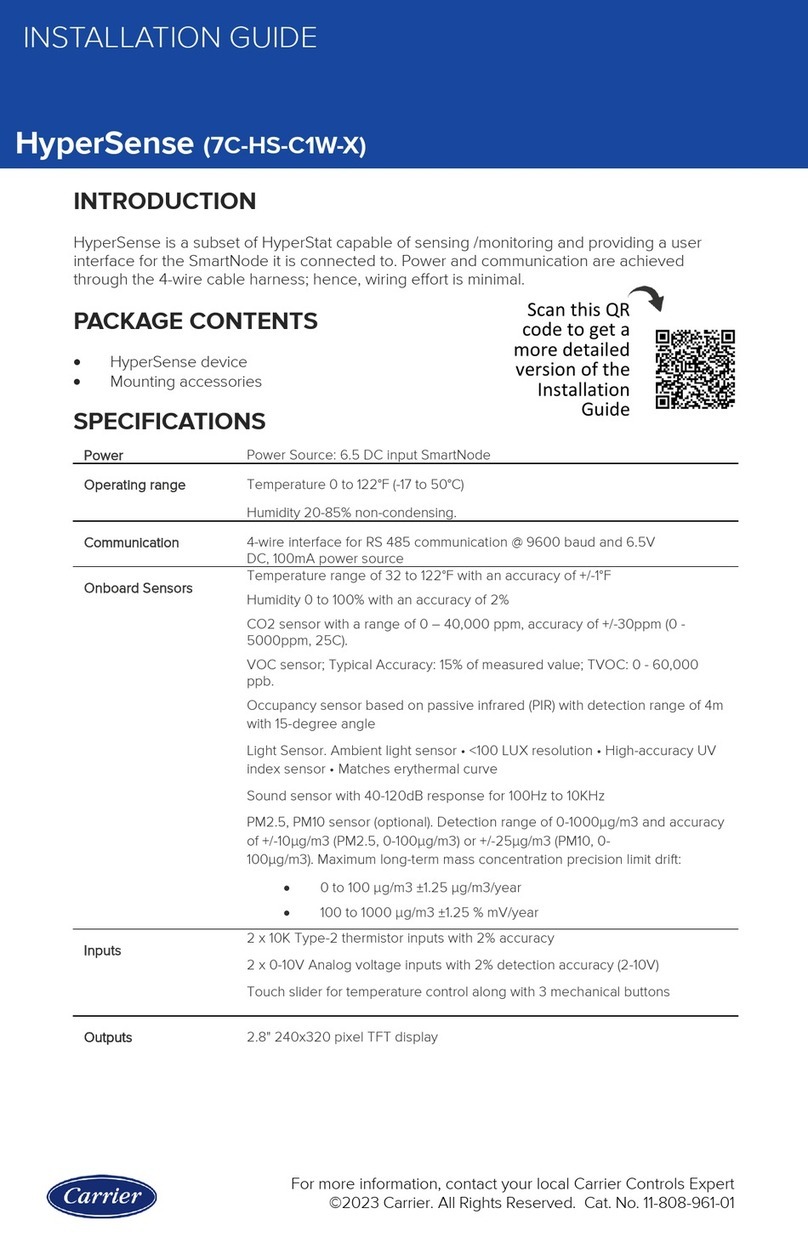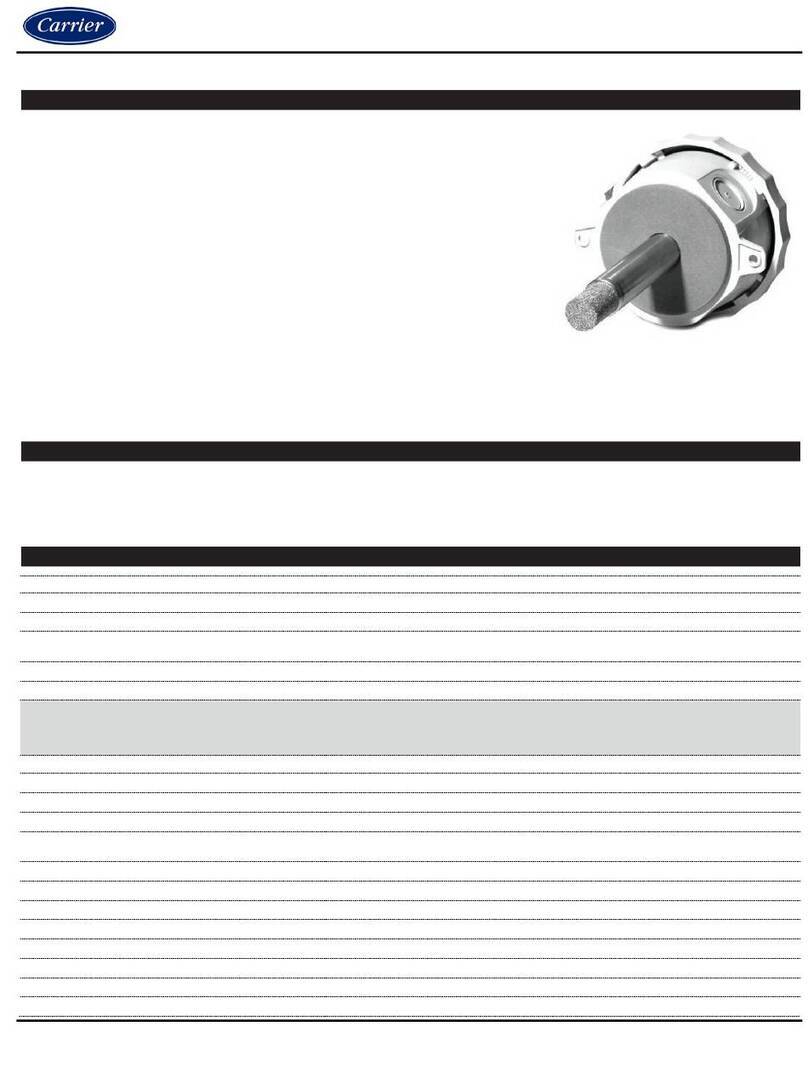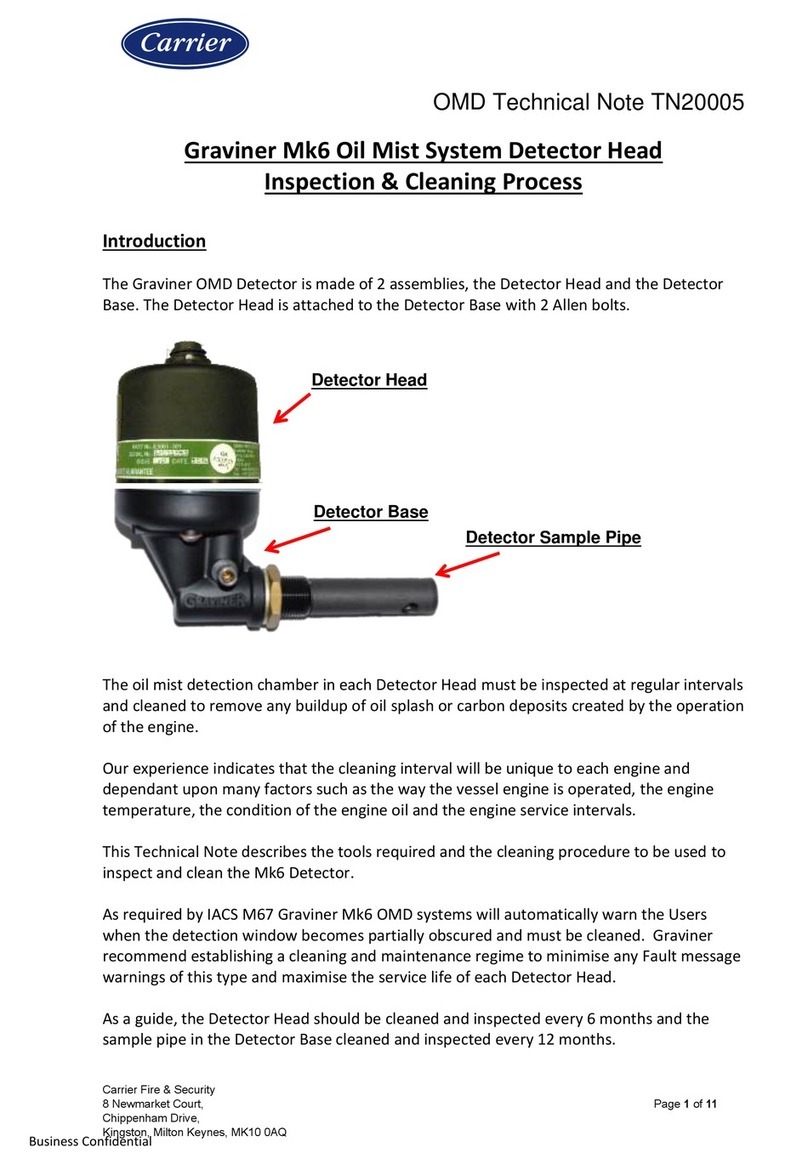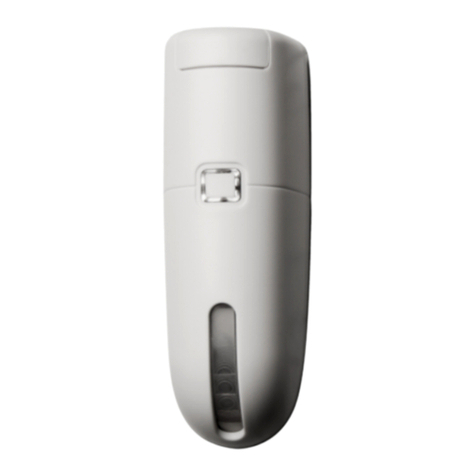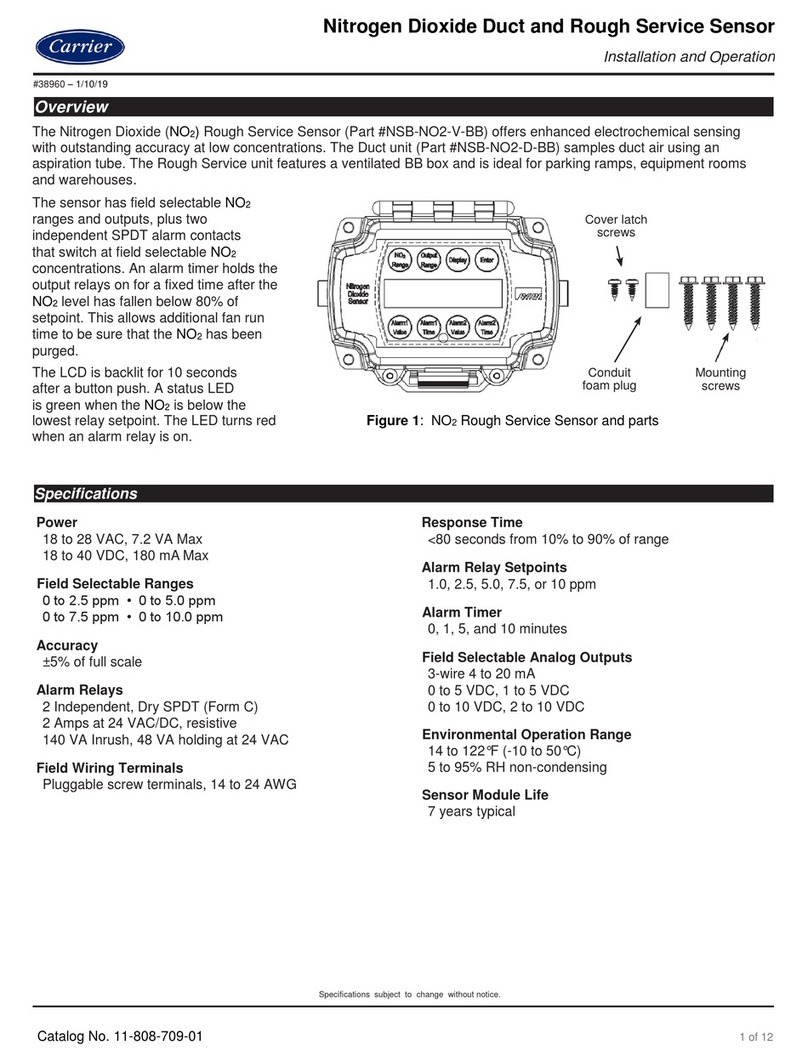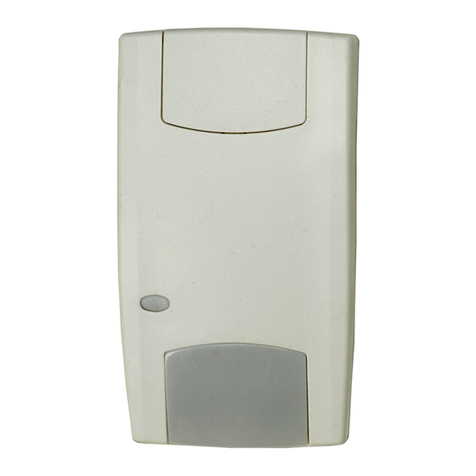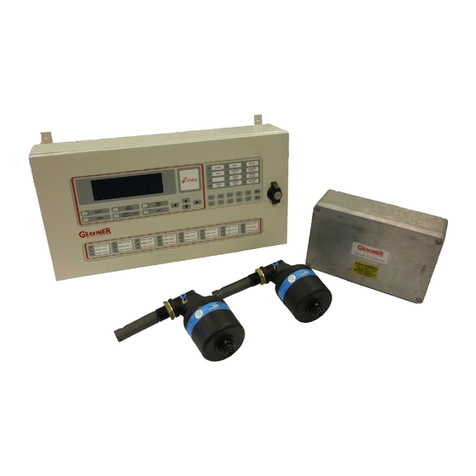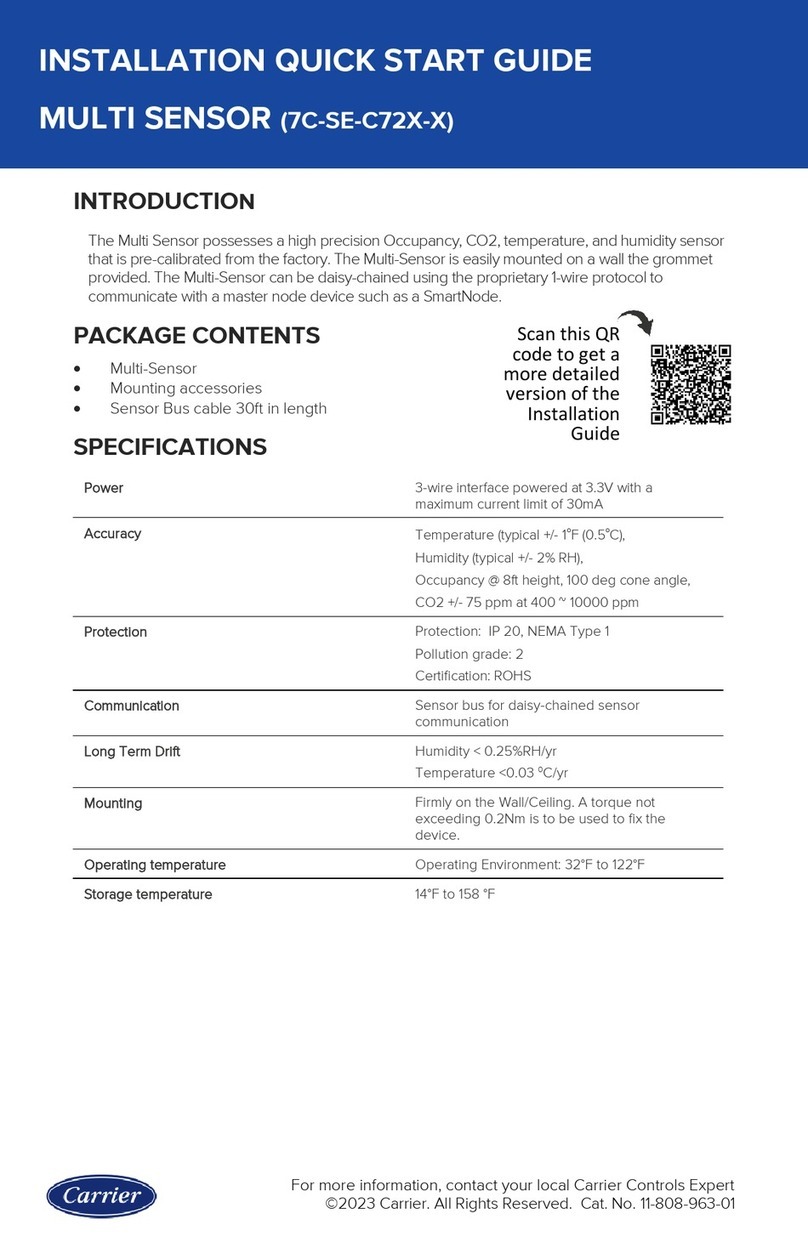
495-85624.2
FALSE ALARM IMMUNITY
The PM-5MPX is highly resistant to false alarms. However,
a fire alarm output due to non-fire stimuli is possible.
(Refer to Appendix A for a list of common stimuli and the
false alarm immunity distance for those stimuli, as tested
by FM Approvals. No false alarms occur for larger
distances in laboratory measurements.)
The detector is intended for use in indoor locations. For
best performance, the detector should be mounted so
that any exposure to false alarm sources occurs only at
distances greater than the indicated distances. In
addition, to ensure optimum performance, detectors
should be mounted so that they do not view very brightly
illuminated areas. For example, indoor mounting locations
where the detectors look out doors or windows should be
avoided.
DETECTOR INSTALLATION
PHYSICAL MOUNTING
The PM-5MPX must be installed in conformance with the
appropriate drawing provided in this manual, NFPA-72,
the NEC, and all local codes for the hazard classification
of the location to be protected. The detector comes with
an integral multi-conductor cable for the alarm and
power circuits.
CAUTION
The factory sealed front cover is essential to the
approval of the detectors. Removing this cover will
compromise the performance of the detector.
The compact package of the PM-5MPX is of great benefit
in applications where space is a limiting factor. It has four
holes in the mounting flange that can be used to mount
the detector directly to a flat surface or bracket. Take care
not to over-tighten mounting hardware.
The number of detectors required to protect a given area
will depend on the size of the area, the distance from the
detector and the size and type of the fire threat. Certain
factors need to be considered when designing an
installation:
1. The detectors should be installed so that objects do
not block their field of view. This includes glass,
plexiglass, and other visibly transparent materials.
2. Whenever possible, detectors should be installed so
their ranges and fields of view overlap.
3. Detectors should be installed so they will not be
blocked by moving machinery or personnel during
normal operations within the area.
4. To ensure optimum sensitivity and performance,
detectors should be installed so they do not view
brightly illuminated areas.
5. The detectors should be installed so that they are
easily and safely accessible for inspection and
maintenance.
6. If mechanical or high-temperature damage, or
window contamination is likely in the installed location,
then the detectors should be protected. However, the
protection method cannot obstruct the detector’s
field of view with any material, including visibly
transparent materials like glass and plexiglass.
7. The detector should be installed in a position higher
than the hazard.
8. Installation of detectors in a location prone to
submersion must be avoided. Submerged detectors
will not detect fire.
9. Detectors should be installed in locations that do not
exceed the operating temperature range (including
ambient temperature and exposure to liquids).
ELECTRICAL WIRING CONNECTION
An approved installation of the PM-5MPX flame detector
must be in accordance with the FM Approved drawings
included as appendices to this manual and all local
codes. The required drawing for specific hazardous
(classified) or non-hazardous locations can be determined
from the Control Drawing Configuration (Drawing 420031,
Appendix B). Detectors may be wired in a standard NFPA
class B, style B configuration or in a class A, style D
configuration. Approved initiating device circuits may be
either intrinsically safe, non-incendive, or suitable for the
classified location as required.
